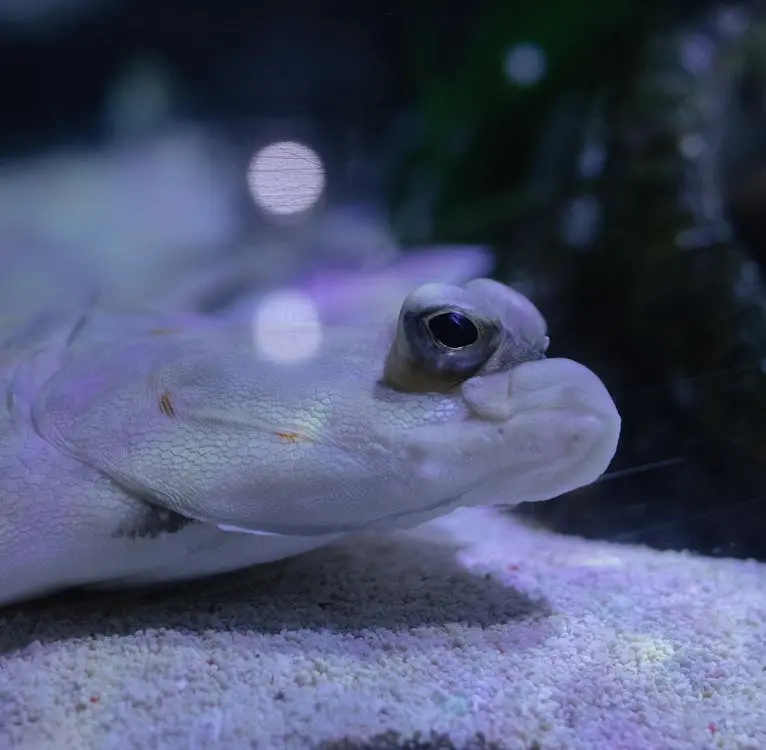Flounder: Stages - Trophy
Table of Contents
- Fishing Trophy Flounder
- Overview of Trophy Flounder
- The Trophy Stage
- Physical and Behavioral Characteristics
- Habitat and Areas
- Temperament During the Trophy Stage
- Targeting Trophy Flounder
- Effective Tactics
- Bait and Lure Recommendations
- Community and Expert Angler Tips
- Popular Search Terms Related to Trophy Flounder
Fishing Trophy Flounder

Image Credit: ellie-burgin on Pexels
Overview of Trophy Flounder
Trophy flounder represent the pinnacle of flounder fishing—a stage where these bottom-dwelling fish have matured into impressive specimens known for their size, strength, and masterful camouflage. At this stage, trophy flounder inhabit prime fishing grounds and display distinct behavioral and physiological characteristics that set them apart from their younger counterparts.
The Trophy Stage
Physical and Behavioral Characteristics
-
Size and Strength:
Trophy flounder have reached an impressive size and possess well-developed muscles. Their larger, more robust bodies allow for explosive strikes and prolonged fights. -
Camouflage and Coloration:
As they mature, these flounder refine their camouflage. Their coloration closely matches the sandy or muddy bottoms of their habitats, making them difficult to spot until they launch a sudden ambush. -
Feeding Behavior:
- Aggressive Striking: During periods of optimal feeding, trophy flounder are known to strike with explosive power.
- Selective Feeding: They become more selective in their choice of prey, often targeting larger baitfish or crustaceans.
Habitat and Areas
-
Primary Habitats:
Trophy flounder are most commonly found on sandy or muddy bottoms along coastal shelves, estuaries, and near river mouths. These environments provide both the camouflage and abundant forage necessary for their growth. -
Structure-Rich Zones:
Areas that combine open bottom with structural elements such as submerged vegetation, rock outcrops, and man-made structures (e.g., docks or pilings) tend to be prime spots where trophy flounder ambush prey. -
Water Depth and Clarity:
They prefer relatively shallow water that allows them to blend seamlessly with the substrate. However, during certain periods, they may move to slightly deeper areas to follow prey migrations or avoid disturbances.
Temperament During the Trophy Stage
-
High Activity Periods:
In times when forage is abundant (often influenced by tidal changes or seasonal shifts), trophy flounder are extremely active, exhibiting fast, explosive strikes. -
Conservative Phases:
Conversely, during periods of low light or when prey is scarce, they become more cautious. Their strikes become more deliberate, and subtle presentations are required to entice them.
Targeting Trophy Flounder
Effective Tactics
While a steady retrieve is a standard approach, targeting trophy flounder often benefits from varied retrieval techniques. Here are some methods to consider:
-
Stop-and-Go Retrieve:
- Technique: Alternate between steady motion and brief, deliberate pauses.
- Tip: The pauses simulate injured or drifting prey, which can provoke a commitment strike from a cautious flounder.
-
Erratic Twitching:
- Technique: Introduce sudden, sharp twitches or jerks into your retrieve.
- Tip: This unpredictable action mimics the escape behavior of wounded bait, often triggering an explosive strike from a trophy flounder.
-
Variable Speed Retrieval:
- Technique: Vary your retrieve speed within a single cast to imitate the erratic movement of live prey.
- Tip: Experiment with different speeds to find the optimal presentation based on current water conditions and fish behavior.
Bait and Lure Recommendations
-
Live Baits:
Small live baitfish (like pilchards or minnows) or crustaceans work well by naturally enticing a strike. -
Artificial Lures:
Use soft plastic lures designed to imitate injured baitfish. Natural color patterns that blend with the substrate are most effective.
Community and Expert Angler Tips
- Learning Through Video Guides:
Watching detailed video tutorials can help refine your technique. Check out the video below for a comprehensive guide on targeting Trophy Flounder:
Click the thumbnail above to watch a detailed guide on targeting Trophy Flounder.
For more tips, check out "fishing Trophy Flounder tips" on YouTube
Popular Search Terms Related to Trophy Flounder
| Search Term | Thumbnail | Link |
|---|---|---|
| Trophy Flounder Techniques | Watch Video | |
| Best Lures for Trophy Flounder | Watch Video | |
| Trophy Flounder Retrieve Strategies | Watch Video | |
| Where to Find Trophy Flounder | Watch Video | |
| Trophy Flounder Fishing Tips | Watch Video |
Ask AI for More Info
Try our AI assistant for free—sign up to access this powerful feature.
👉 Sign Up to Ask AI